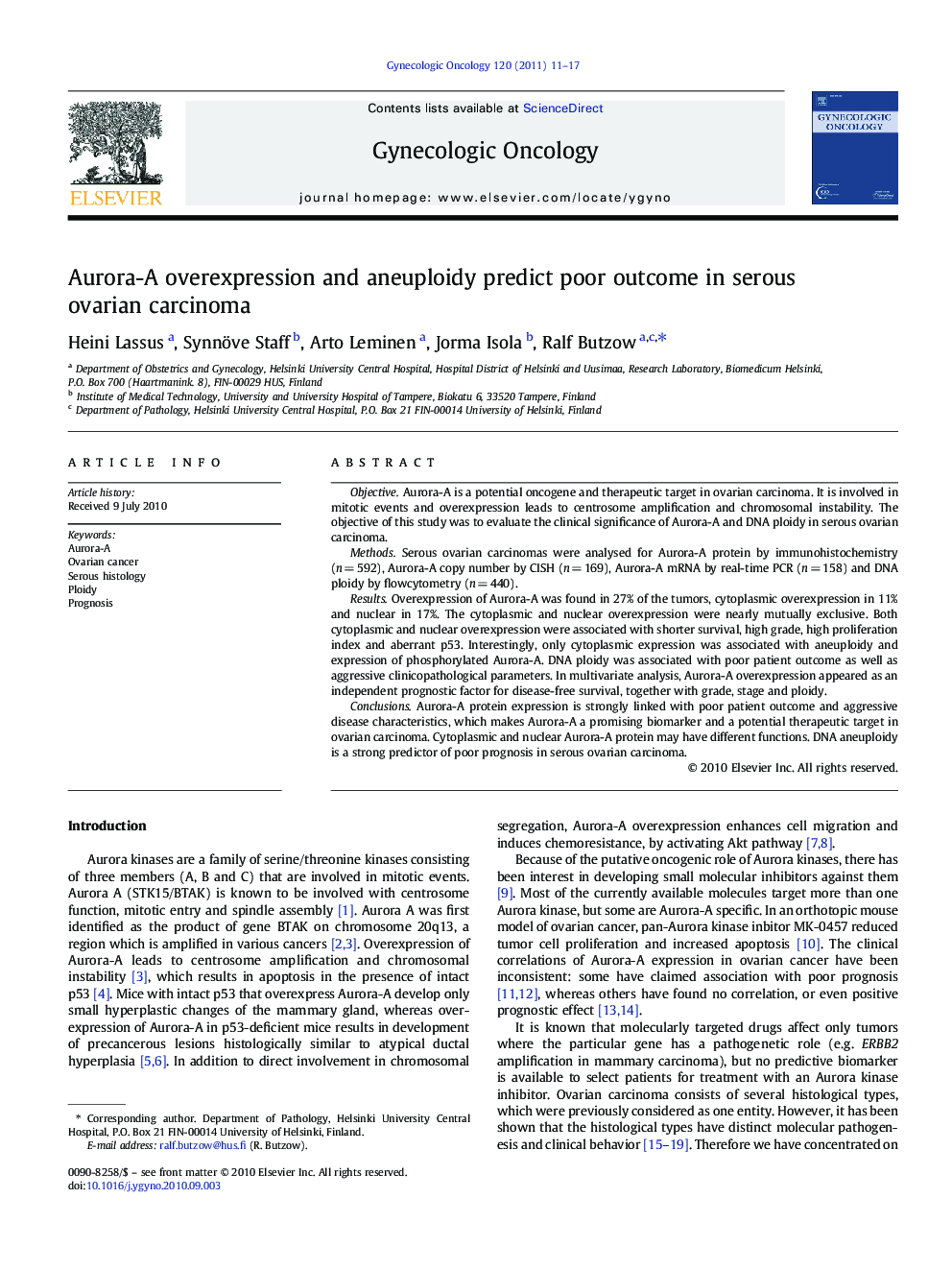| Article ID | Journal | Published Year | Pages | File Type |
|---|---|---|---|---|
| 3947172 | Gynecologic Oncology | 2011 | 7 Pages |
ObjectiveAurora-A is a potential oncogene and therapeutic target in ovarian carcinoma. It is involved in mitotic events and overexpression leads to centrosome amplification and chromosomal instability. The objective of this study was to evaluate the clinical significance of Aurora-A and DNA ploidy in serous ovarian carcinoma.MethodsSerous ovarian carcinomas were analysed for Aurora-A protein by immunohistochemistry (n = 592), Aurora-A copy number by CISH (n = 169), Aurora-A mRNA by real-time PCR (n = 158) and DNA ploidy by flowcytometry (n = 440).ResultsOverexpression of Aurora-A was found in 27% of the tumors, cytoplasmic overexpression in 11% and nuclear in 17%. The cytoplasmic and nuclear overexpression were nearly mutually exclusive. Both cytoplasmic and nuclear overexpression were associated with shorter survival, high grade, high proliferation index and aberrant p53. Interestingly, only cytoplasmic expression was associated with aneuploidy and expression of phosphorylated Aurora-A. DNA ploidy was associated with poor patient outcome as well as aggressive clinicopathological parameters. In multivariate analysis, Aurora-A overexpression appeared as an independent prognostic factor for disease-free survival, together with grade, stage and ploidy.ConclusionsAurora-A protein expression is strongly linked with poor patient outcome and aggressive disease characteristics, which makes Aurora-A a promising biomarker and a potential therapeutic target in ovarian carcinoma. Cytoplasmic and nuclear Aurora-A protein may have different functions. DNA aneuploidy is a strong predictor of poor prognosis in serous ovarian carcinoma.
Research Highlights► Aurora-A overexpression associates strongly with aggressive disease characteristics ► Particularly cytoplasmic and Thr288 phosphorylated Aurora-A relate to aneuploidy ► Protein overexpression looks like the most promising biomarker for anti-Aurora-A trials
